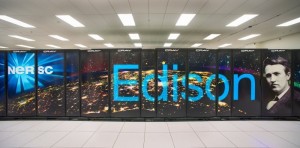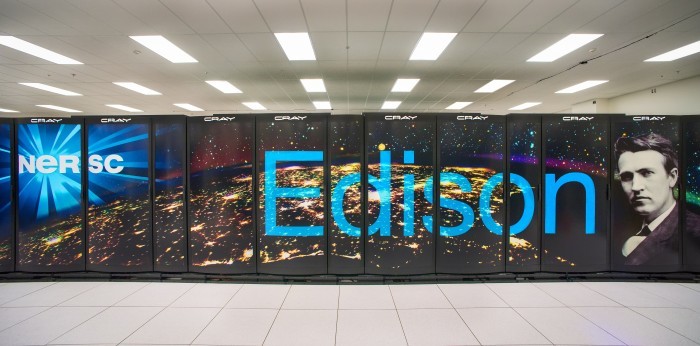 Over at NERSC, Jon Bashor writes that the National Energy Research Scientific Computing Center recently accepted “Edison,” a new flagship supercomputer designed for scientific productivity. Named in honor of American inventor Thomas Alva Edison, the Cray XC30 will be dedicated in a ceremony held at the Department of Energy’s Lawrence Berkeley National Laboratory (Berkeley Lab) on Feb. 5, and scientists are already reporting results.
Over at NERSC, Jon Bashor writes that the National Energy Research Scientific Computing Center recently accepted “Edison,” a new flagship supercomputer designed for scientific productivity. Named in honor of American inventor Thomas Alva Edison, the Cray XC30 will be dedicated in a ceremony held at the Department of Energy’s Lawrence Berkeley National Laboratory (Berkeley Lab) on Feb. 5, and scientists are already reporting results.
Edison can execute nearly 2.4 quadrillion floating-point operations per second (petaflop/s) at peak theoretical speeds. While theoretical speeds are impressive, “NERSC’s longstanding approach is to evaluate proposed systems by how well they meet the needs of our diverse community of researchers, so we focus on sustained performance on real applications,” said NERSC Division Deputy for Operations Jeff Broughton, who led the Edison procurement team.
Specifications:
- 332 terabytes memory
- 2.39 petaflop/second peak performance
- 124,608 processing cores
- 462 terabytes/second global memory bandwidth
- 11 terabytes/second network bisection bandwidth
- 7.56 petabytes disk storage
- 163 gigabytes/second I/O bandwidth
Edison is already producing impressive results. Approximately 5,000 researchers working on 700 projects will use Edison. In total, they will run 600 different codes and produce an average of 1,700 peer-reviewed publications every year, making NERSC the most productive scientific computing center serving the Department of Energy’s Office of Science.
Read the Full Story.




